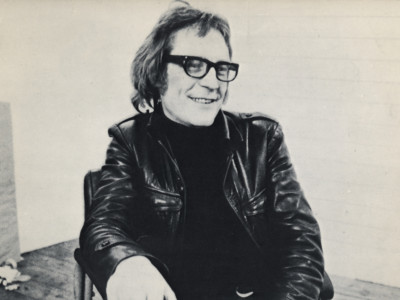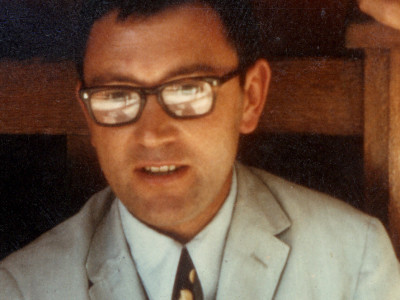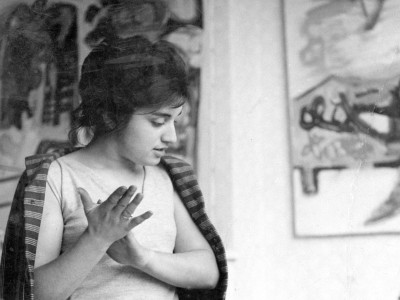
In memoriam: Phyllida Barlow RA
By Alison Wilding RA
Published on 25 May 2023
Alison Wilding RA reflects on the life and qualities of her fellow sculptor, and their friendship over four decades.
There has been an outpouring of sadness at Phyllida’s death, and accolades for her as an artist, an inspirational teacher, writer and communicator, but for 40 years she was also my brilliant friend.
I think of Phyllida coming into a room full of people – definitely not making an entrance and often covered in paint or plaster – but becoming the epicentre of conversation and gales of laughter. She was simply the best person to sit next to, to have an early morning phone conversation with, to bitch about this or that with, and to talk about books with.
In 2001 I unexpectedly came across a sculpture of hers at dusk in Mile End Park. Situated on a grassy slope was View – one of those now iconic wooden stacks of seating or shelving, painted greenish-white – a section of auditorium perhaps. Not a huge work, casual but poised and surprisingly poignant, it has become lodged in my memory. In 2006, as part of the Summer Exhibition team, I invited Phyllida to make a work for the Annenberg Courtyard – Untitled: Red/Brown. This was when as an artist she was still relatively under the radar, known to other artists and students, and not yet an RA. Another work in the courtyard was Damien Hirst’s The Virgin Mother – a massive bronze showstopper: pregnant woman as biological specimen overshadowing Phyllida’s paint-splashed and densely orchestrated wooden construction. There could have been no clearer demonstration of the diverging paths of sculpture in 2006, and what a fantastic conversation those two artists could have had then! Thirteen years later, ‘cul-de-sac’ was her own showstopping exhibition in the Gabrielle Jungels-Winkler Galleries at the Royal Academy.

Phyllida Barlow’s solo show at the RA, in 2019
There had been a decade of massive installations, ambitious, exciting but also exhausting. She was always the go-to artist to sit on a panel, at everyone’s beck and call to write a text, make a podcast, give a lecture, be in conversation... forever generous and never too tired to say no. Amazingly, she was utterly untainted by her status in the art world. I read somewhere that she said that her world was really quite small. It encompassed her work and her family – their house, which was such a generous and warm-hearted home.
A few days before she died we had supper together – it was the aftermath of ‘Hurly-Burly’, the long-planned show in Paris with Phyllida, Rachel (Whiteread) and myself – and I think it was the most time we had spent together for ages. Over supper she expressed a desire to downsize and was hugely looking forward to it. What she really wanted was to be alone in the studio and to make her work. To get back to making sculpture that had no immediate destination – to work at her own pace. One of Phyllida’s very early wall works in ‘Hurly-Burly’ was a small shelf that had been completely wrapped in Sellotape – a cocoon that over the years had yellowed and glowed – and one of those small works which in those days had been her mainstay, something she was wanting to return to.
After Phyllida died I found myself at the Beuys drawing show at Thaddaeus Ropac gallery in London. I kept missing her and bumping into her at the same time, coming across a wall text in the gallery that she herself had written:
...and we watch this line, tracing it back and forth – it refuses to be committed to memory, its scrawl both familiar but unique, informing us of that human urgency, to show that someone was here...
Related articles

In memoriam: Mick Moon RA
1 May 2024

In memoriam: Joe Tilson RA
28 January 2024

In memoriam: Sonia Lawson RA
12 September 2023